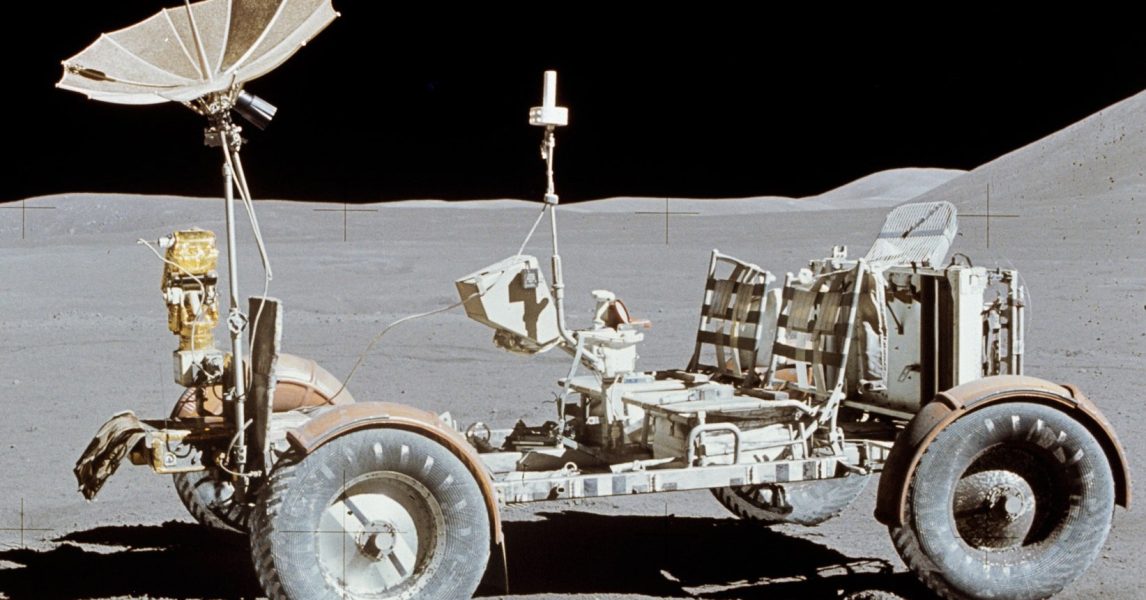Not just heat death: Here are five ways the Universe could end – Ars Technica

Star Light in the Dark
Need a pick-me-up? Consider these cheery possibilities.
If you’re having trouble sleeping at night, have you tried to induce total existential dread by contemplating the end of the entire Universe?If not, here’s a rundown of five ideas exploring how “all there is” might become “nothing at all.”Enjoy.We’ll start our survey with the classic scenario, what you might call the default. It’s the future predicted to come about if everything we know about the Universe is largely correct and all that stuff in the cosmos continues to behave the way it has for the past few billion years. Of course, what we know about the Universe is likely to be wrong, and the contents of the Universe are likely to change and evolve with time. So while this scenario might be the default, it should be taken with a neutron star’s worth of salt. But much like a TV meteorologist trying to write up the weekend outlook five minutes before airtime, it’s the best we have given the data available.We live in an expanding Universe, and in the late 1990s, two independent teams of astronomers discovered—much to their surprise—that the expansion is accelerating. Whatever’s driving that expansion was dubbed “dark energy,” and a quarter century later, we still have no idea what it is. But we do know what it does. We don’t know why the Universe’s expansion is accelerating; we just know that it is.As far as we can tell, that acceleration will continue unabated forever into the future, driving all the material in the Universe ever farther apart. Right now, our observable horizon is about 45 billion light-years away. But any galaxy we see that’s more than about 13 billion light-years away is already forever lost to us. Those galaxies are receding faster than light, so there’s no hope of ever traveling to them. Their light will slowly dim and redshift until they have disappeared from view altogether.With dark energy, our observable horizon grows ever smaller with time, despite the increasing size of the Universe. Anything that’s not already gravitationally bound to our galaxy will eventually be pulled away from us. For us, that means only the members of the Local Group will survive these tumultuous times. But anything outside of that bubble, which is only a few billion light-years on a side, will be gone forever. So if you’re close and personal with a galaxy that’s not named Andromeda or Triangulum, you might as well say your goodbyes now.Given enough time (and the Universe has plenty of that to go around), galaxies dissolve as stars, and planets get flung into wonky orbits through countless interactions with each other. With even more time, even all macroscopic objects evaporate through quantum tunneling, and black holes shrink due to the emission of Hawking radiation.Far enough into the future, say, 10100 years from now, what we call the Universe will consist of an expanding bath of subatomic particles slowly cooling on their way to absolute zero.This is called the “heat death” of the Universe, but you can think of it instead as the death of heat. There will be no more differences in temperature anywhere, which means thermodynamics shuts down, which means no more ability to do work. And that means no potential for life as we know it (even the really lazy kind).The heat death of the Universe is a rather morose picture, but it seems inevitable based on the fact that dark energy is a constant. No matter where or when you are in the Universe, dark energy is always there, seemingly never getting stronger, never getting weaker.But measurements of the strength of dark energy made over the past two decades have raised questions about that “seemingly.” Instead, they lean in a threatening direction, indicating that dark energy might be getting stronger with time. These measurements aren’t enough to declare this as observational fact, however, because the uncertainties are more than large enough to accommodate a “nothing to see here” constant value. So, no alarm bells (yet), but it’s always struck me as interesting that the data tends to prefer this scenario.When dark energy gets stronger with time, we give it a new name: phantom dark energy, because (a) its possibility violates certain assumptions about the nature of energy in the Universe, and (b) it’s a really cool name. In a universe with phantom dark energy, the accelerated expansion transitions from the slow and sedate pace that we observe today into an out-of-control frenzy that literally tears apart the Universe.Appropriately called the Big Rip scenario, the timeline of events depends on just how strong dark energy can get. At its worst, the fun could get started in only a few billion years (which is frighteningly soon considering that the Universe itself is only 13-plus-change billion years old). Even gravitationally bound structures will not survive the ensuing phantom apocalypse. The Local Group will get torn apart, along with the Milky Way, followed by our Solar System, followed by the planets….followed by you, me, our cells, our molecules, our atoms, our everything.And it’s not just called the Big Rip because matter gets torn apart. Space destroys itself. If you pick any two random points, no matter how close they are together, in short enough order, they will be infinitely distant. That kind of breaks down everything we know about the regularity of the fabric of spacetime, so the Big Rip is like an inside-out singularity: The entire Universe becomes nonsensical, with all notions of distances destroyed.There are still some open theoretical questions surrounding the Big Rip. For example, the subatomic particles known as quarks are really good at binding together. In fact, if you try to separate them, you put so much energy into the effort that you just end up spawning even more quarks that then bind up with the pair you’ve pulled apart. We don’t know how the Big Rip would interact and/or interfere with this process, but frankly, not many people have been working on it because the scenario is just that unappealing.Let’s hope we never have to find out.The Universe is expanding; Edwin Hubble established that in the 1920s. But it didn’t have to be expanding. When Albert Einstein first formulated general relativity and applied those equations to the evolution of the Universe (because, hey, why not?), he discovered that the natural state of the cosmos was to be in motion. He tried to fix this by adding a cosmological constant because at the time, everyone thought the Universe was static, but that’s another story.But the Universe itself didn’t care if it was expanding or contracting; as long as it was dynamic, general relativity said it was fine. A Russian physicist, Alexander Friedmann, discovered that the evolution of the Universe depended on its contents. If you start with an initial expansion, the mutual gravity of all the stuff within the Universe can alter that expansion, depending on what that stuff is made of and how much stuff there is.Present observations of the cosmos reveal that there isn’t nearly enough matter to slow down, let alone reverse, its expansion. And that’s without even considering dark energy, which is ramping up that same expansion.But there’s a lot we don’t know about dark energy—like, for example, what it is, why it’s doing what it’s doing, and what it will do in the future. It’s very possible that dark energy won’t just evolve but change, decaying into some other kind of energy or even into particles, increasing the matter in our Universe (this kind of thing happens all the time in quantum field theory, so it’s not out of the question).Dark energy may evolve in such a way that the current phase of accelerated expansion is just a passing fad, and, at some point in the future, the Universe’s expansion will slow down, stop, and then reverse. Assuming that it continues in that new, reversed trajectory unabated, the cosmos will then enter into what’s called a Big Crunch.A rather descriptive name, the Big Crunch will see a reversal of all these billions of years of cosmic history: The cosmic web will shrink, galaxies will crash together, the temperatures and pressures will rise and turn matter into a plasma, atoms and nuclei will get crushed, the soup of subatomic particles will transform into higher energy states, and then…Well, we’re not sure what will happen then. Just like we don’t understand the initial moments of the Big Bang, we don’t understand the final moments of the Big Crunch. The answer likely sits in the world of quantum gravity, which remains an unsolved problem in physics. Perhaps there’s a smallest possible quantum state that the Universe can achieve, and it will bounce back from that. Perhaps branes (higher dimensional versions of strings) will bounce off of each other in that extreme state, igniting a new Big Bang.Or perhaps that will be the end: a gravitational singularity, a point of infinite density, the only gravestone for the cosmos we know and love.If that wasn’t unpleasant enough for you, consider this: Perhaps the Universe will take some weird physics to the extreme and disintegrate in a flash of energy. The best part? We wouldn’t even know it’s coming.The early cosmos underwent a series of tumultuous phase transitions as the fundamental forces of nature split off from each other. The last such event separated the weak nuclear from the electromagnetic force, leaving behind a cosmos filled with the particles and radiation that we know and love today.But it may not be done.Obviously, the last transition led to a somewhat stable state, as things haven’t changed (at least at a fundamental quantum level) in over 13 billion years. But that does not guarantee that the present configuration of the quantum vacuum is the true lowest-energy, most-stable state. We could be merely metastable, meaning that the vacuum is stable as long as nothing severe happens.Unfortunately, several things happen all the time in the Universe, and random quantum oscillations could send the vacuum careening into its true ground state, which would come with a collection of forces, particles, and fields that are the lowest-energy configuration possible—and unrelated to the particles and forces in our present Universe. This phase transition would start in some random spot in the cosmos and race outward at the speed of light, containing within it a brand new kind of universe almost certainly incompatible with the kind of life, chemistry, and even atomic physics that our Universe has managed to concoct.Because this phase transition bubble expands at the speed of light, there would be no warning of its arrival. One day, we would simply be going about our business and then blink: The new Universe takes its place. Whatever particles had composed our bodies and whatever forces held them together would vanish, to be replaced with a new quantum configuration.Sleep tight.Perhaps all this overwhelming negativity regarding the end of the Universe is what prompted Nobel laureate Roger Penrose in 2010 to propose a completely different mechanism for the long-term fate of the Universe, something dubbed conformal cyclic cosmology, or CCC.If we follow the line of thinking behind the heat death of the Universe to its ultimate conclusion, the Universe is so expansive and so cold that each individual particle becomes isolated from all others. These particles could be anything, but they’ll generally be the lightest known subatomic particles: electrons, neutrinos, maybe dark matter, and the zero-mass photons.For CCC to work, the model assumes that all particles eventually decay into photons. No physicists think this is possible (not even Penrose), but who knows what the far-future Universe could cook up. Once all the particles have converted into photons, you’re left with a featureless spacetime: no reference points, no guideposts, no sense in which you could distinguish “here” from “there”—or really “anywhere.”Penrose found that the end state of this Universe can map onto the beginning state of a new universe. In essence, the far future of the cosmos becomes the big bang of a new one, and our cosmos is just one of an infinite strand that always seamlessly emerge from each other.You still have to navigate a heat death of each universe to get started on the next one, however, which is a bit of a bummer. And besides violating key principles of known physics, it’s not clear that the properties of a CCC Big Bang match the observed qualities of our early Universe, like the pattern in the cosmic microwave background, the leftover light from when the Universe transitioned out of a plasma state when it was 380,000 years old.While CCC is almost certainly wrong, when it comes to the end of the Universe, wrong ideas can still be useful and instructive. We may learn something from the idea, or any of the other proposals for the universal endgame. Unfortunately (or fortunately, depending on your perspective), we won’t be around to directly test which one of these ideas or related concepts is right.But it’s still fun to think about.Ars Technica has been separating the signal from
the noise for over 25 years. With our unique combination of
technical savvy and wide-ranging interest in the technological arts
and sciences, Ars is the trusted source in a sea of information. After
all, you don’t need to know everything, only what’s important.






